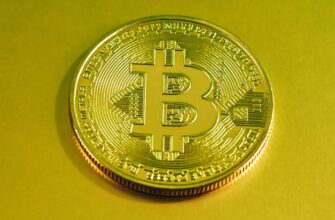- Introduction to the Rupiah-USD Exchange Rate
- Historical Overview of the Rupiah-USD Exchange Rate
- 1. Early Years: Post-Independence (1949–1965)
- 2. The Suharto Era and Stabilization (1966–1997)
- 3. The Asian Financial Crisis (1997–1998)
- 4. Modern Era (2000–Present)
- Key Factors Influencing the Rupiah-USD Rate
- Rupiah to USD History: FAQ Section
- 1. Why Does the Rupiah Fluctuate Against the USD?
- 2. How Did COVID-19 Impact the Rupiah?
- 3. When Is the Best Time to Exchange Rupiah to USD?
- 4. Will the Rupiah Strengthen in 2024?
- 5. How Can Businesses Mitigate Exchange Rate Risks?
- Conclusion
Introduction to the Rupiah-USD Exchange Rate
The Indonesian Rupiah (IDR) to US Dollar (USD) exchange rate has played a critical role in Indonesia’s economic landscape. As Southeast Asia’s largest economy, Indonesia’s currency fluctuations reflect its economic resilience, global market dynamics, and geopolitical events. This article explores the Rupiah’s historical performance against the USD, key influencing factors, and answers to common questions.
Historical Overview of the Rupiah-USD Exchange Rate
1. Early Years: Post-Independence (1949–1965)
After Indonesia gained independence in 1949, the Rupiah was introduced, initially pegged to the Dutch Guilder. By 1952, the exchange rate was adjusted to 3.8 IDR/USD. However, political instability and hyperinflation in the 1960s caused severe depreciation, with rates reaching 5,000 IDR/USD by 1965.
2. The Suharto Era and Stabilization (1966–1997)
Under President Suharto’s New Order regime, Indonesia adopted economic reforms, including a fixed exchange rate system. The Rupiah stabilized at 415 IDR/USD in 1971. However, the 1980s oil crash led to a devaluation, and by 1997, the rate was 2,400 IDR/USD.
3. The Asian Financial Crisis (1997–1998)
The Rupiah collapsed during the crisis, plummeting to 16,800 IDR/USD by 1998. The government shifted to a floating exchange rate system, and IMF interventions helped stabilize the currency.
4. Modern Era (2000–Present)
Post-crisis recovery saw gradual stabilization. Key milestones include:
- 2005: 9,900 IDR/USD
- 2015: 13,800 IDR/USD (due to falling commodity prices)
- 2020: 15,000 IDR/USD (COVID-19 impact)
- 2023: 14,500–15,500 IDR/USD range
Key Factors Influencing the Rupiah-USD Rate
- Commodity Prices: Indonesia’s exports (oil, palm oil, coal) tie the Rupiah to global commodity trends.
- Inflation Differentials: Higher inflation in Indonesia compared to the U.S. weakens the Rupiah.
- Political Stability: Elections and policy shifts impact investor confidence.
- Global USD Strength: The USD’s safe-haven status affects emerging market currencies.
- Central Bank Policies: Bank Indonesia’s interest rates and forex interventions play a key role.
Rupiah to USD History: FAQ Section
1. Why Does the Rupiah Fluctuate Against the USD?
Fluctuations stem from trade balances, inflation rates, geopolitical events, and global market sentiment.
2. How Did COVID-19 Impact the Rupiah?
The pandemic caused a drop to 15,000 IDR/USD in 2020 due to reduced exports and tourism.
3. When Is the Best Time to Exchange Rupiah to USD?
Monitor trends during U.S. Federal Reserve announcements or Indonesia’s commodity export reports for favorable rates.
4. Will the Rupiah Strengthen in 2024?
Analysts predict moderate stability if commodity prices rise and inflation remains controlled, though global uncertainty persists.
5. How Can Businesses Mitigate Exchange Rate Risks?
Use hedging tools like forward contracts or diversify currency holdings.
Conclusion
The Rupiah-USD history highlights Indonesia’s economic journey and vulnerability to global forces. Understanding this relationship aids investors, businesses, and travelers in navigating currency risks effectively.








